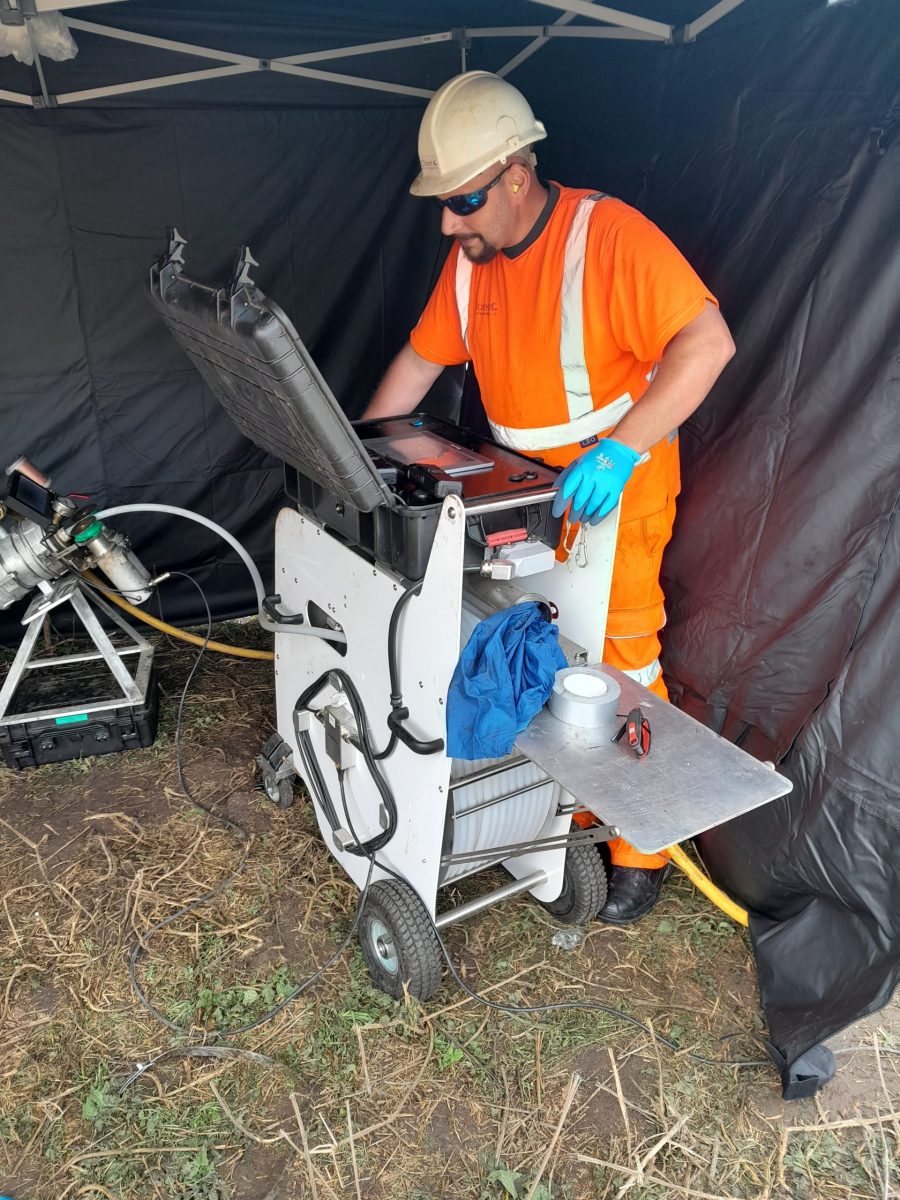Case Study – Loddon Rising Main – Chedgrave
Which department is this referring to?
Claret Lining Division
Who was the customer?
Anglian Water IMR WR Alliance
What was the problem?
It was reported that ground was unusually wet in a conservation area near to Loddon & Chedgrave by some ramblers & dog walkers. Anglian Water deployed a team to investigate and found that their pumped main had been leaking into the ground in several places. Fortunately, flows were switched over to another pressure main which was lay next to the defective pipe to allow further investigation. Known hatch boxes were opened to allow for a full CCTV survey of the failing asset.
The conclusion from 713m x 300mm rising main survey was that a lot of joints had failed due to poorly installed pipework and had deteriorated over time. A permanent solution was required that was supportive of the existing pipe, able to withstand internal pressure of up to eight bar but also external pressure resulting from hydrostatic, soil and live load situations. The other complication to the site, was that it was part of the 123-acre Hardley Flood biological Site of Special Scientific Interest in Norfolk. It is part of the Broadland Ramsar site and Special Protection Area, and The Broads Special Area of Conservation. Nearby is the Hardley Flood Bird Reserve. It can be found along Wherryman’s Way via Chedgrave, it also boasts lots of rare wildlife that live within the shallow lagoons and reed beds, so the solution had to be the least intrusive method to impact that environment.
Claret Civil Engineering spoke with various suppliers for a trenchless solution (NO DIG) to offer up a product that had to meet the demands of not only the environment but also the high flow and internal pressures when in operation. A lining solution was agreed with Austria-based NordiTube Technologies SE, who were to introduce, for the first time in the UK, the NORDIPIPE™ system which was of course vitally important that the right liner material was used on such a sensitive project.
The unique performance characteristics of NORDIPIPE™, namely its flexibility and quick installation, make it possible to rehabilitate many kinds of pipes (steel, ductile and cast iron, asbestos cement, concrete, PVC, and PE). Moreover, it can be used to reline both partially and fully deteriorated pipes and often pipes with bends and deflections.
Furthermore, it is a strong liner and therefore able to withstand not only the internal pressure, but also external pressure resulting from hydrostatic, soil and live load situations.
The NORDIPIPE™ liner for Loddon consisted of a combination of a coated felt, two glass- fibre layers and an additional layer of felt. The glass-fibre layers in the liner have excellent characteristics when in tension and therefore this makes the NORDIPIPE™ an extraordinarily strong, but flexible liner. It has its own intrinsic strength and stiffness and therefore does not rely on the host pipe for structural support, though it needs to be in close contact with the host pipe to maximise the final lined pipe’s cross-section, and to enable the ends to be sealed off properly.
This Project was managed, resourced, and delivered by Claret Civil Engineering Lining Contracts Manager, Scott Weston, who programmed for the enabling works, liner impregnation, delivery, and installation of five individual linings which was completed in two weeks.
Also, for this project, Weko end seals were fitted to prevent water from migrating along any annular gap that existed between the NORDIPIPE™ liner and the host pipe. This was particularly important as a hydrostatic pressure test was performed upon the installed liner once the pipeline was coupled back up to the remainder of the pipeline. Testing was successful and the pipeline was put back into service a few weeks later.



